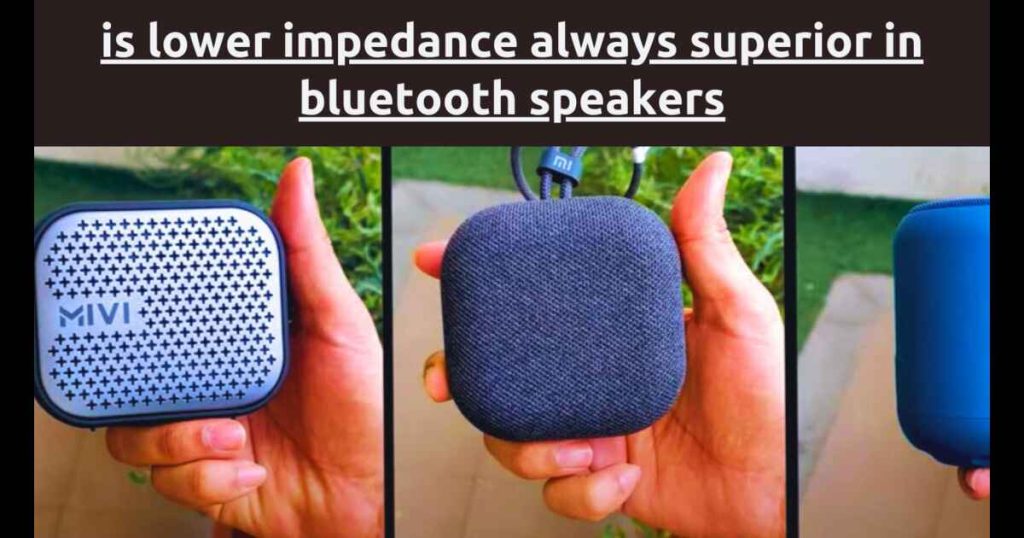
Bluetooth speakers, with their blend of convenience and high-quality sound, continue to captivate music enthusiasts. One common assumption in the realm of speaker specifications is that lower impedance always equates to better performance in Bluetooth speakers. In this article, we’ll unravel the complexities surrounding speaker impedance to determine whether lower impedance truly signifies superior performance in these wireless audio companions.
Also read our comprehensive guide on impedance of Bluetooth speaker and Why Do Some Bluetooth Speakers Have Different Impedance Ratings.
Is Lower Impedance Always Superior in Bluetooth Speakers
In this article we will discuss our topic “Is Lower Impedance Always Superior in Bluetooth Speakers”. So lets start to explore
Unraveling Speaker Impedance
Understanding Impedance
Speaker impedance measures the resistance a speaker offers to the electrical current from the amplifier. Traditionally, lower impedance values, often ranging between 4 and 6 ohms, suggest a speaker that draws more power from the amplifier.
The Volume Perception
Lower impedance speakers are often associated with higher volumes. They require less power to achieve loudness, making them appear more capable, especially when driven by low-powered devices like smartphones or portable music players.
The Nuances of Lower Impedance in Bluetooth Speakers
Power Efficiency and Output
Lower impedance speakers might indeed reach higher volumes with less power. However, this doesn’t necessarily imply superior audio quality or overall performance. Some users prioritize volume over other aspects like clarity and fidelity.
Impact on Battery Life
Lower impedance speakers, while offering louder output, might drain the battery faster, especially in Bluetooth speakers where battery life is crucial for portable use. This raises the question: Is the sacrifice of battery life justified for louder sound?
Balancing Act: When Lower Impedance Falls Short
Quality vs. Quantity
Higher impedance speakers, though potentially not as loud with the same power input, can offer advantages in terms of efficiency and audio fidelity. They might deliver clearer sound, especially at lower volumes, and potentially conserve battery life for longer playback times.
Amplifier and Device Compatibility
Bluetooth speakers with lower impedance might seem appealing for their ability to be driven by low-powered devices. However, compatibility issues might arise when pairing with higher-powered amplifiers, leading to potential damage or distortion.
Finding the Sweet Spot
Selecting Based on Preferences
The choice between higher or lower impedance in Bluetooth speakers ultimately hinges on user preferences. Those valuing volume might lean towards lower impedance, while others seeking balanced performance might opt for higher impedance models.
Balanced Performance Considerations
In the pursuit of exceptional sound quality and battery longevity, users must weigh their priorities. The sweet spot lies in finding a Bluetooth speaker that aligns impedance with desired sound quality, ensuring an optimal listening experience.
Conclusion:
In conclusion, the assumption that lower impedance always signifies better performance in Bluetooth speakers is a nuanced one. While lower impedance might offer louder volumes with less power, it’s not a sole indicator of superior audio quality or overall performance.
Choosing the ideal Bluetooth speaker entails a thoughtful evaluation of impedance alongside other factors like audio preferences, usage scenarios, and desired battery life. Understanding the nuances of impedance empowers users to make informed decisions, crafting an audio experience that harmonizes volume, clarity, and longevity in line with individual preferences.
